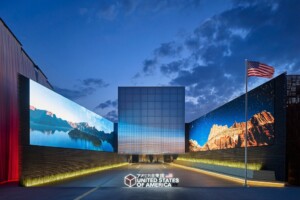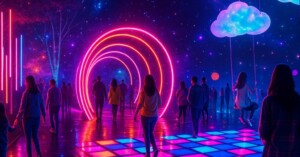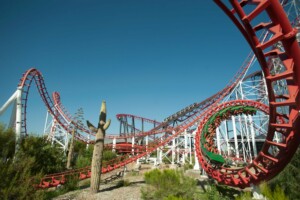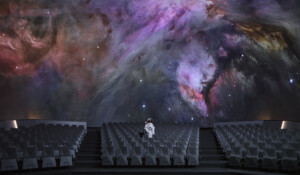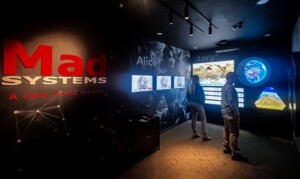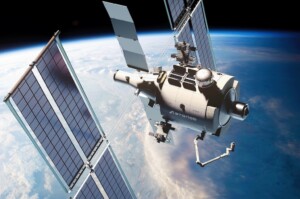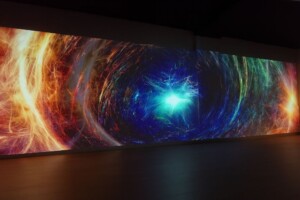Modulo Pi, a provider of media server solutions with a user-friendly design, is celebrating the launch of ARTEXPLORER, Art Explora Foundation’s travelling festival and the first museum boat in the world.
Akumendo and Arscénique collaborated on the IT and AV for this unusual and complex project. The catamaran incorporates an advanced audiovisual system, including an immersive LED tunnel and the Modulo Kinetic media server from Modulo Pi.
World’s first museum boat
The Art Explora Foundation, founded by French entrepreneur and philanthropist Frédéric Jousset, focuses on bringing art and culture to a broader audience through mobility and digital technology.
The foundation’s new initiative, the Art Explora Festival and its catamaran, ARTEXPLORER, launched in Spring 2024 and will sail until autumn 2026. The travelling festival will visit 15 countries across the Mediterranean Sea and offer free access to unique cultural and artistic experiences, both onboard the boat and at the host cities’ docks.
ARTEXPLORER is a 47-metre-long catamaran with towering 5-metre sails, and is the world’s first museum boat. The project was initiated four years ago, and the boat was designed by architects Axel de Beaufort and Guillaume Verdier and constructed at the Perini Navi shipyard in Italy.
Akumendo, a specialist in IT integration for yachts, and Arscénique, an audiovisual service provider, collaborated to meet the vessel’s extraordinary requirements. The project’s key challenge was to create an immersive environment on the boat’s main deck to host digital exhibitions for around 40 people. The technology also needed to be removable to allow ARTEXPLORER to function as a cruise ship during non-festival periods.
Immersive experience
The visitor experience has three parts. Guests visit the ARTEXPLORER’s upper deck and are given RSF Confident headphones with binaural audio. With these, they experience a sound voyage over the Mediterranean Sea. This experience was created by Ircam, the French organisation for musical and acoustic research and coordination.
The journey continues to the aft deck, where a documentary is displayed on a 3-metre by 2-metre LED wall. Finally, the visitors move into the centre of the main deck to the immersive exhibit. The digital installation, ‘Présentes’, is produced by Julien Abril and the Graphics eMotion team in cooperation with the Louvre.
Here, visitors will encounter an immersive LED tunnel. Akumendo, Arscénique, and Leyard collaborated closely to create the customisable and removable structure.
Guy Butterati, co-founder of Akumendo, explains: “We had to combine the constraints of the sailing environment with those of an event-type system. The system was designed as if for a tour.”
The tunnel consists of two walls 16 metres long and 3 metres high, with curving LED modules that reach up to the massive mast base. Two-metre-square LED walls at the tunnel’s entrance and exit complete the structure. The gallery can seat approximately 40 guests at approximately 1.8 metres from the screens, and all LED elements have a pitch of 1.5 for an optimal visual experience.
Tunnel specification
Akumendo and Arscénique powered the LED tunnel’s 50 million pixels with Modulo Pi’s Kinetic media server. The system includes a Modulo Kinetic Designer workstation and 3 Modulo Kinetic V-Node servers with 4K outputs and 4TB of storage. The servers play a 12-minute show at 60 FPS for the LED tunnel in addition to the documentary on the boat’s aft deck.
Modulo Kinetic also powers the 8 Genelec multi-channel speakers located throughout the immersive space. A Dante virtual sound card has been installed on one of the V-Node servers to connect networked speakers, avoiding the need for additional cables on the boat.
Modulo Pi’s media server show control functions were also used, with Modulo Kinetic’s UI Designer allowing for customised panels to control video show launches and audio playback via binaural headphones. Additionally, a customised maintenance panel provides real-time input from the audiovisual system.
The Kinetic Panel companion app allows a tablet to access the control panels developed in the media server.
Butterati says: “Technical information such as temperature or electricity consumption are available in the form of a dashboard for the Operations Manager, who can access it from his own iPad.”
Flexible design
In addition to the Art Explora Festival, the immersive LED tunnel can be expanded to operate on land, overcoming the limitations of the catamaran.
Emmanuel Ducros, chairman of Arscénique, comments: “We studied another self-supporting truss structure to accommodate the tunnel installation. We proposed raising the whole structure with an additional line of LEDs to enlarge the space.”
The event version of the LED tunnel is still 16 metres long, but it is 1 metre wider and 50cm taller. Hangar Y, Europe’s first airship hangar and a UNESCO World Heritage Site near Paris, hosted the land-based tunnel as part of its ‘Recharger’ exhibition in partnership with Studio Oasis Immersion of Canada. From 16 December to 11 February, visitors could enter the immersive LED tunnel and explore five visual and auditory artworks made by renowned artists.
After this exhibition, the system needed to be quickly installed in ARTEXPLORER, ready for its launch in Malta where it showed from 21 to 31 March. The Akumendo and Arscénique crews had 12 days to complete the first installation on the catamaran. The electronics were verified during pre-assembly and exhibition at Hangar Y; therefore, the set-up time focused on addressing the boat’s limitations. To fit the tight space available, the Modulo Kinetic servers were placed on the port and starboard sides of the installation.
Butterati shares: “We had to make everything black, work with the boat’s electrical distribution and manage the power sequencing of the LEDs.
“The system has proven two things to us: It’s very open, very versatile, and also very reliable in its operating phase.
“Art Explora is a far-sighted foundation. We didn’t want a simple player. With Modulo Kinetic, we know that we’re future-proof and that we’ll be able to respond to every possible situation in the future.”
The Art Explora Festival welcomed 18,000 visitors to its first location in Malta, then sailed to Venice for the Biennale. It will next stop at the Old Port in Marseille from 6 to 18 June.









